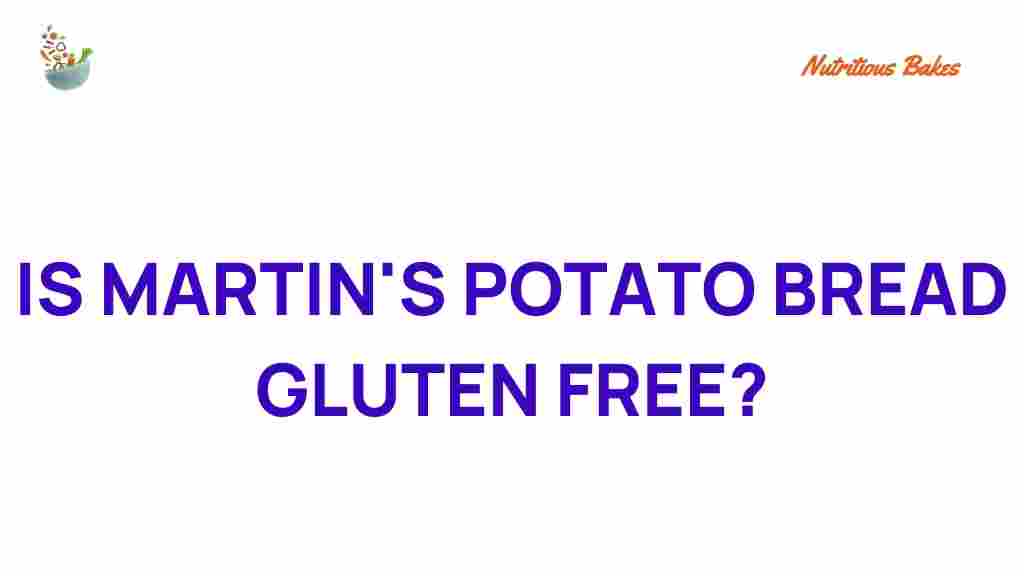Is Martin’s Potato Bread a Gluten-Free Delight or a Deceptive Treat?
When it comes to baked goods, few items have captured the hearts (and stomachs) of consumers quite like Martin’s Potato Bread. Known for its soft texture and rich flavor, this bread has become a staple in many households. However, for those with gluten sensitivity or celiac disease, the question arises: Is Martin’s Potato Bread a gluten-free delight or a deceptive treat? In this article, we will delve into the nutrition of Martin’s Potato Bread, explore gluten-free alternatives, and provide insights into food labeling and dietary needs.
Understanding Gluten and Its Impact
Before we dive into the specifics of Martin’s Potato Bread, it is essential to understand gluten. Gluten is a protein found in wheat, barley, and rye. For many, gluten is harmless, but for those with gluten sensitivity or celiac disease, consuming gluten can lead to serious health issues. Symptoms may include:
- Bloating
- Diarrhea
- Abdominal pain
- Fatigue
As awareness of gluten sensitivity grows, many consumers are seeking out gluten-free options. This has led to a surge in the popularity of bread alternatives that cater to those dietary needs.
Examining Martin’s Potato Bread
Martin’s Potato Bread is made with a blend of ingredients that typically includes:
- Potato flour
- Wheat flour
- Sugar
- Yeast
- Salt
At first glance, the use of Potato flour might suggest that the bread could be gluten-free. However, the inclusion of wheat flour means that Martin’s Potato Bread is not suitable for those with gluten intolerance.
Nutrition of Martin’s Potato Bread
Understanding the nutrition of Martin’s Potato Bread is crucial for making informed dietary choices. One slice of Martin’s Potato Bread typically contains:
- Calories: 100
- Carbohydrates: 18g
- Protein: 3g
- Fat: 1g
- Sugars: 2g
This bread is often praised for its taste and texture but is not a suitable option for those looking for gluten-free bread alternatives. Instead, those with gluten sensitivity should consider other options.
Exploring Gluten-Free Bread Alternatives
If you’re seeking gluten-free bread alternatives, there are several options available on the market. Here are a few popular choices:
- Almond Flour Bread: Made from finely ground almonds, this bread is high in protein and low in carbs.
- Coconut Flour Bread: A gluten-free option that is also rich in fiber.
- Rice Flour Bread: A common gluten-free bread that is light and fluffy.
- Sourdough Bread (Gluten-Free): Many bakeries now offer gluten-free sourdough made with gluten-free grains.
Each of these alternatives has its unique flavor and texture, making it essential to experiment to find the best fit for your dietary needs.
Food Labeling and Gluten-Free Standards
When shopping for baked goods, understanding food labeling is crucial. The FDA has strict definitions regarding what can be labeled as gluten-free. For a product to be labeled gluten-free, it must contain less than 20 parts per million (ppm) of gluten. This regulation helps consumers make safe choices.
However, it’s important to always check the ingredient list. Even products labeled gluten-free can sometimes be processed in facilities that handle gluten-containing grains, leading to potential cross-contamination.
Step-by-Step: Choosing the Right Bread for Your Needs
Choosing the right bread involves a few steps:
- Identify Your Dietary Needs: Determine if you have gluten sensitivity, celiac disease, or are simply looking to reduce gluten in your diet.
- Research Your Options: Look for gluten-free brands and read reviews on taste and texture.
- Check Food Labels: Always read the ingredient list and look for the gluten-free certification.
- Experiment: Try different brands and types of gluten-free bread to find your favorite.
Troubleshooting Tips for Gluten-Free Baking
If you decide to venture into gluten-free baking, here are some tips to help you succeed:
- Use the Right Flour: Gluten-free flours vary greatly in their baking properties. Consider using a blend for better results.
- Incorporate Bindings: Ingredients like xanthan gum or psyllium husk can help create a more bread-like texture.
- Adjust Liquid Levels: Gluten-free flours often absorb more liquid, so you may need to adjust recipes accordingly.
- Experiment with Baking Times: Gluten-free baked goods may require different baking times than traditional recipes.
Conclusion: Making Informed Choices
In conclusion, while Martin’s Potato Bread is a beloved product for many, it is not a gluten-free delight. Those with gluten sensitivity or celiac disease should be cautious and seek out true gluten-free bread alternatives. With a growing market for gluten-free options, consumers can find a variety of tasty and nutritious baked goods that cater to their dietary needs.
For more information on gluten-free diets and products, consider visiting the Gluten Intolerance Group for resources and support.
Ultimately, understanding food labeling, experimenting with alternatives, and being aware of your dietary needs will empower you to make the best choices for your health and well-being. Enjoy exploring the world of gluten-free baked goods!
This article is in the category Ingredients and created by NutritiousBakes Team
